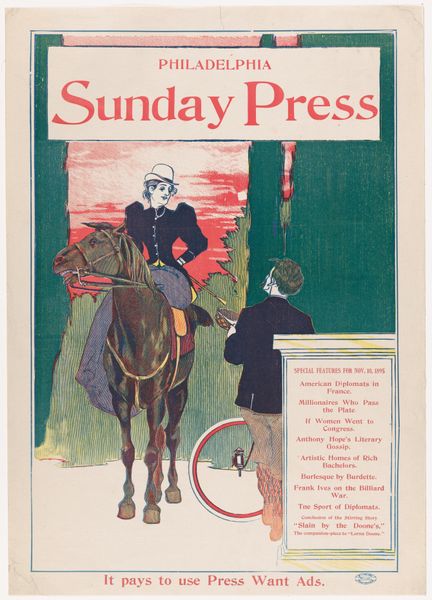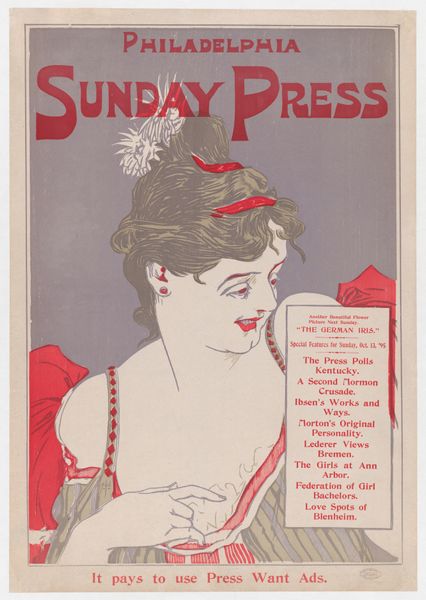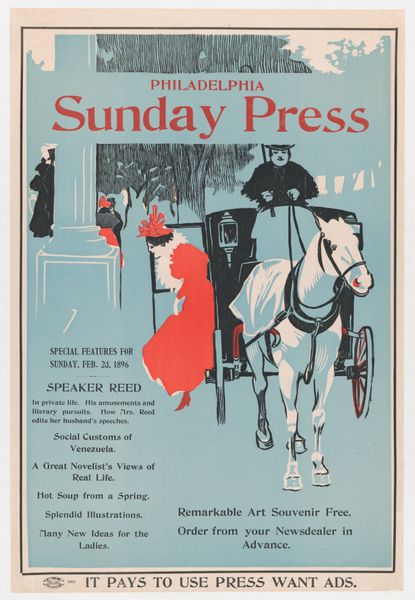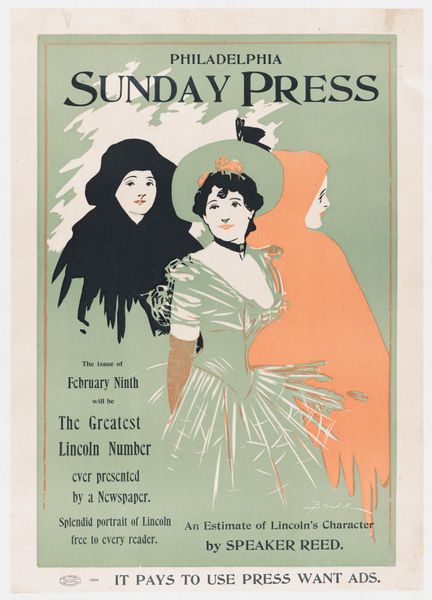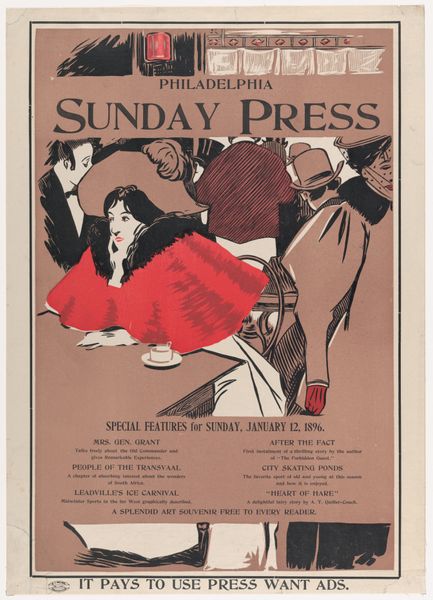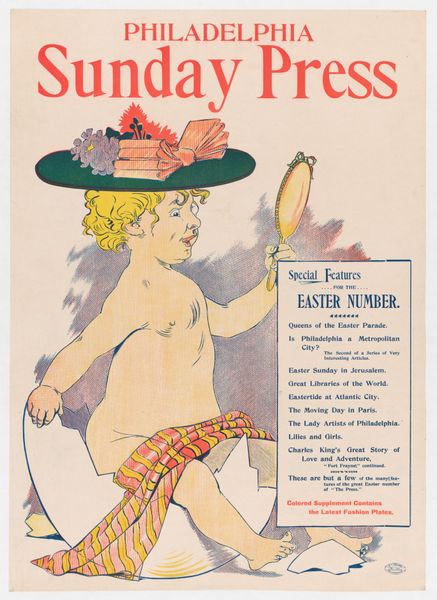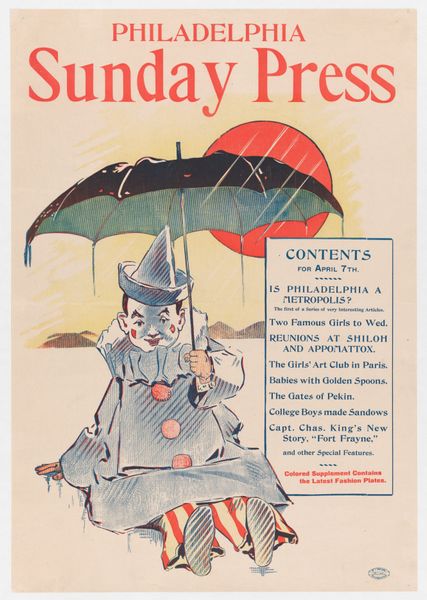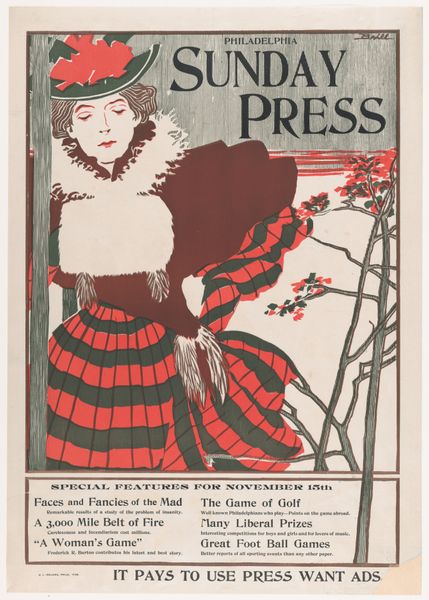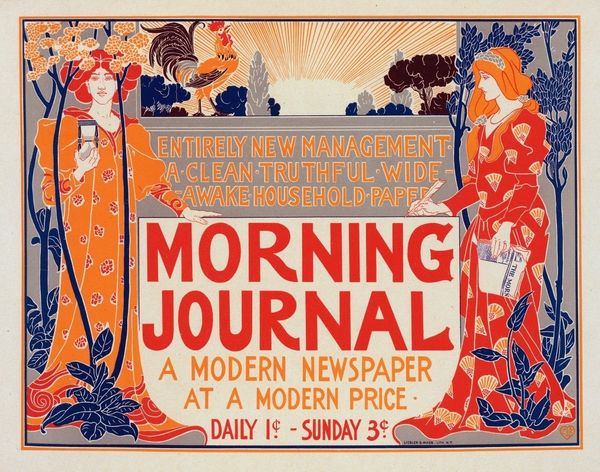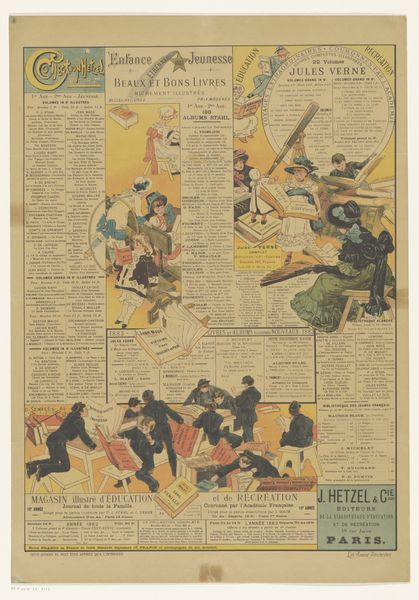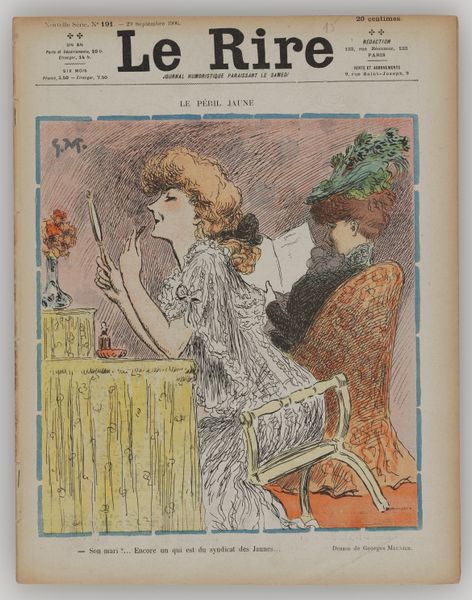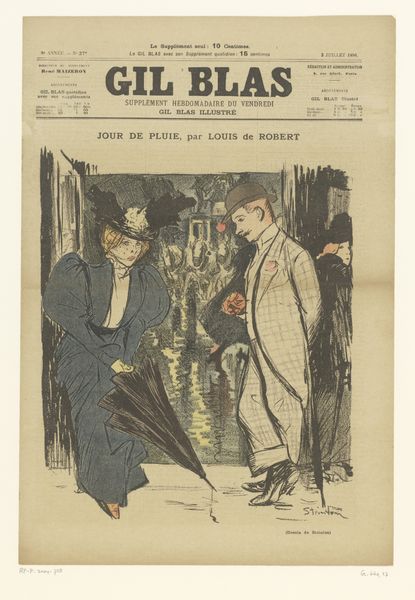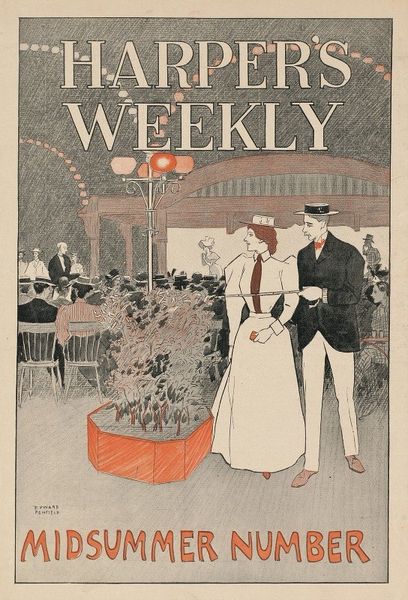
drawing, print, pen
#
portrait
#
drawing
#
art-nouveau
# print
#
men
#
symbolism
#
pen
#
watercolour illustration
Dimensions: Sheet: 21 7/16 × 15 11/16 in. (54.5 × 39.8 cm) Image: 20 3/16 × 13 11/16 in. (51.2 × 34.7 cm)
Copyright: Public Domain
Curator: This is "Philadelphia Sunday Press: September 29th," a print created in 1895 by George Reiter Brill. The drawing presents itself with elements of both Art Nouveau and Symbolism. The combination of pen, ink, and watercolor results in a intriguing visual texture. Editor: It's quite striking! My immediate reaction is one of subtle unease. The color palette is muted, yet there's a vibrancy, or perhaps, a tension simmering beneath the surface. Curator: Observe the composition—the central grouping of figures and the poster-like quality of the overall design. Brill juxtaposes different pictorial spaces here; notice the characters occupying distinctly layered zones. What do you read from this formal arrangement? Editor: The figures caught between spectacle and reality speak volumes. There's the detached gaze of the fashionable woman contrasted against the energetic dancers, who are themselves framed against that looming hooded figure. A definite social commentary bubbling to the surface... gender dynamics and societal roles, perhaps? Curator: Undoubtedly. The stark lines and color choices give a sense of depth and also flatness simultaneously. Semiotically, the elements converge and suggest the cultural obsessions of the period, yet these signs also create an opaque feeling, one that welcomes personal interpretation. Editor: Absolutely. Think about this circulated as part of the Sunday paper... positioned alongside stories announcing, "Mrs. William Astor as a Dinner Giver," as the title reveals at bottom left. How does Brill visualize cultural performance when access is delineated by class, or more pressingly, when a patriarchal society has assigned such limited avenues of mobility to women, the primary characters pictured here? The print serves to document and, arguably, critique societal theater. Curator: So true; thank you for pointing out those key stories! Returning to the stylistic elements of Symbolism... this aesthetic sensibility eschews Realism in favor of an allusion to myth, a world not anchored in empiricism. Brill masterfully evokes multiple narratives with the use of subtle cues; in short, these clues serve as triggers, which set the work free, thus creating meaning and new realities, with each interpretation. Editor: I'd agree that the artist cleverly holds back; these narrative mysteries resonate even now, and perhaps it’s our own personal projections and understanding of societal norms that make the piece all the more timeless and resonant today. Curator: It’s precisely through its inherent ambiguity that Brill’s artwork endures and encourages ongoing dialogue. Editor: Indeed. It’s an intricate piece that invites continuous decoding—a true reflection of the complexities embedded in any society.
Comments
No comments
Be the first to comment and join the conversation on the ultimate creative platform.
